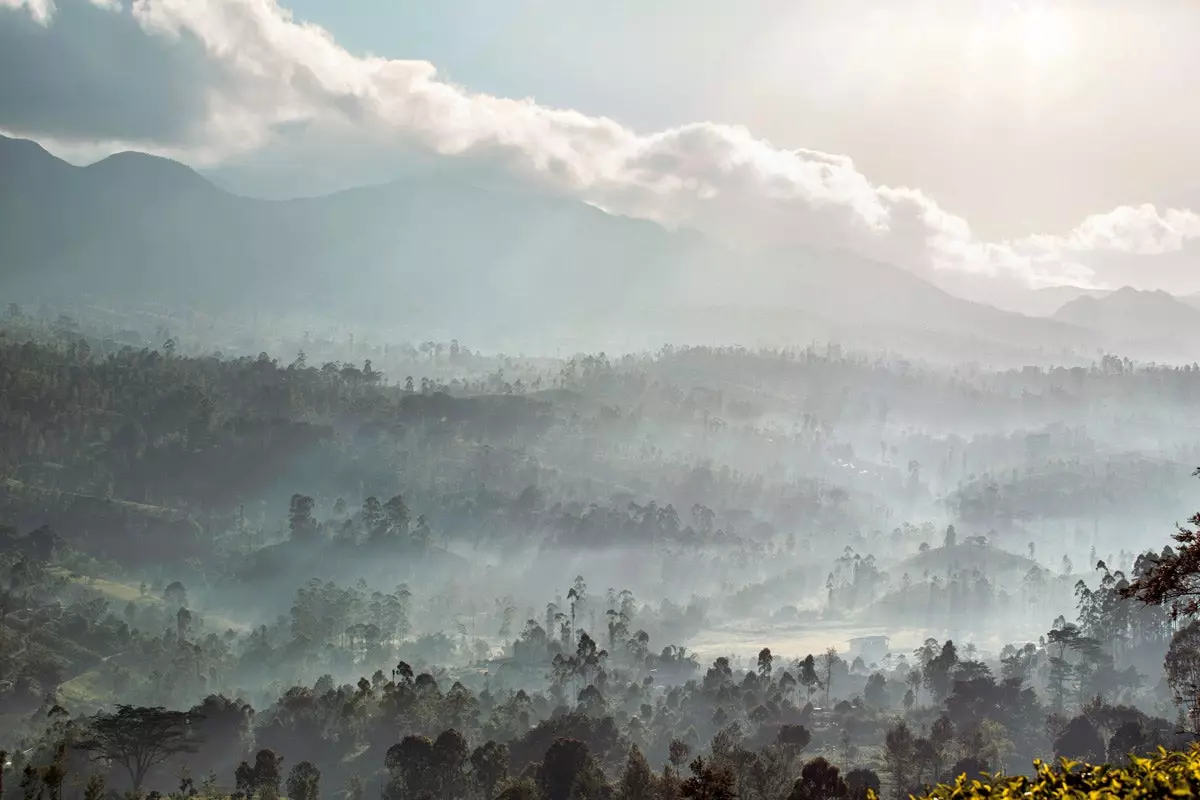
View from Norwood Bungalow at the Tea Trails Hotel
My first visit to Tea Island was in 1981, when I was a member of The Guardian's cricket team. Each and every one of the components of that group of dreamers, curmudgeons and prima donnas fell in love with Sri Lanka . We had to wait half an hour for them to bring us a cup of this infusion for breakfast in our shabby hotel in Colombo ; when the eggs arrived, maybe it wasn't what you ordered, but you ate them anyway so you wouldn't wait another 40 minutes. The bellhops didn't want tips, just sat on the edge of the bed and asked about England, which they had heard about in school. "Are you married, sir?" "How is London?". For them, our country was something halfway between Las Vegas and Camelot . Sometimes you had to cut them off: "I'm very sorry, but the coach is leaving...". Returning, tired, hot, and usually defeated, we found the resident masseuse standing in the doorway of her room , beckoning us with a toothless grin. She didn't used to give me massages back then, but her services were highly praised.
In the tea plantations, in Nuwara Eliya We stayed at The Hill Club. The site was like a boarding house in post-war Bexhill: on the bedside table was an english road map from 1952 . We had to wear a tie in the dining room and the Sinhala butler in pristine white was named Andrews, name he had inherited from a former servant.
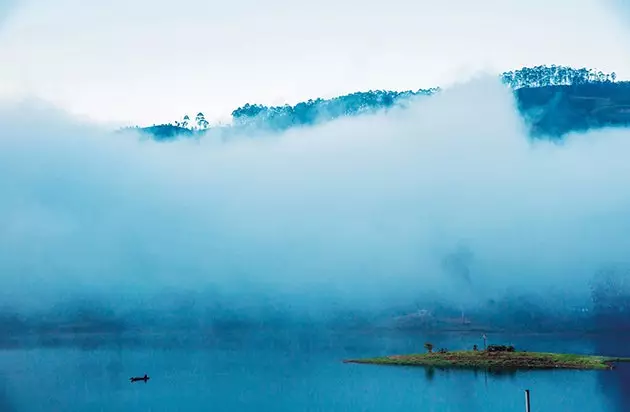
Dense fog rising from Castlereagh Dam at the Tea Trails hotel
I returned to the country at the beginning of this year with my wife, to the plantations near Bogawantalawa , which are spread out over a huge reserve. There you can spend the night in four of the old planter bungalows that make up the **Tea Trails hotel** which, although it has been remodeled, still conveys the essence of what colonial life was like. Pretty good, I'd say. The reservoir looks as natural as a lake in the woods; the tea factory is a model of cleanliness and order, and the Sinhalese people are always courteous . Sure it would be boring to stay indoors for more than a few months - you'd crave some nightlife in Colombo - but for today's visitor the combination of the great views, the bright light and the local food is irresistible . We stayed at the Castlereagh Bungalow, on the water, and at the Tientsin, in the hills, named after a Chinese tea village. The latter gives a more authentic plantation feel, but the former has stunning views of the lake.
Sri Lanka was not always an island dedicated to tea . Until the late 1860s the hills were covered with coffee plants, and practically overnight a fungus wiped out almost everything. The planters were not discouraged and, Led by a Scotsman named James Taylor, they imported tea bushes from China and India . Within a decade, Ceylon (as it was then called) forgot about coffee and became one of the world's leading exporters of black tea: Broken Orange Pekoe, English Breakfast and the rest of the varieties of this hardy, easy-care plant. “ Ceylon's tea fields are a monument to bravery comparable to the Lion of Waterloo said Sir Arthur Conan Doyle, alluding to this response to adversity.
Today, workers earn just over four euros a day, which is little even for a rural economy area where food and fuel are cheap; even considering that schools and nurseries are maintained by owners like dilmah , one of the largest exporters on the island. Sri Lanka has had to come to terms with its colonial past. The Tea Trails Bungalows in Bogawantalaw They offer a story that is neither sugar-coated nor condescending to the thousands of people who have worked hard there. , a balance not easy to achieve.
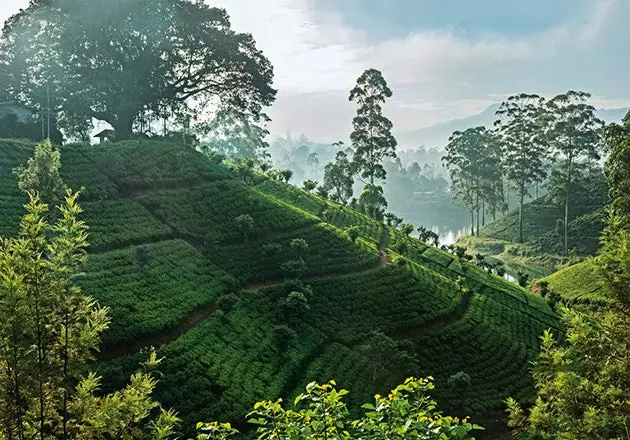
Tea plantations around Castlereagh Reservoir, on the edge of the Central Highlands of Sri Lanka
In turn, the hotel Galle Face in Colombo, grandly located on the waterfront and nearing the end of a long rehabilitation, try something similar. Thirty years ago your demure pianist seemed stranded on the acres of marble cocktail lounge ; the idea now is to keep those picturesque imperial echoes, but with wifi and better bathrooms. The new wing, where the modern and comfortable rooms have sea views, is ready . Overall, it's a livelier place to stay than the Tintagel Colombo , once home to the Bandaranaike presidential family and now a superb but somewhat gloomy hotel, which lacks the pulse of the big city.
close to both there are two of the best restaurants in the capital : Ministry of Crab, owned by charismatic former test cricket captain Kumar Sangakkara; and The Gallery Café , in the Paradise Road mall, which, despite its name, doesn't serve carrot cake or coffee, but does tamarind chili martinis, hot dishes like shrimp curry, and chilled wine . The colonial-style hotel restaurant The Wallawwa , very close to the airport, is also excellent.
It would seem that Sri Lanka has a hard time deciding what it wants to be . There is great potential yet to be developed in the air. The men of this country have a distinguished appearance: the sweeper of any remote station dresses resembling a professor of politics at Yale University . During the government of former President Rajapaksa, the island courted China; the current one, Sirisena, wants to restore ties with India and end corruption. The long civil war and a series of unreliable governments have meant that transport has not been modernized.
From Colombo we were going to fly to Batticaloa, on the east coast, but the flight was cancelled. Instead, we took a small Cessna to Sigiriya, in the center of the island, which included a six-hour drive on unpaved roads to reach Gal Oya Lodge , a new adventure on the brink of Gal Oya National Park . Few travelers come to this part of the island, although the park has herds of elephants and leopards. I didn't see any of these elusive cats, but you might have better luck with smaller mammals like the intrepid hotambuwa (a species of mongoose or civet) or with the innumerable species of birds. One morning, we went for a walk in the woods with the chief of the local tribe, the Veddas, one of Sri Lanka's aboriginal groups. He showed us animal traps set by his people, who disdain the use of firearms, and how they climb trees to collect honey. We also visited a damp cave where a family had lived; but that was many years ago . He himself hoped to go to Colombo shortly to meet the new president.
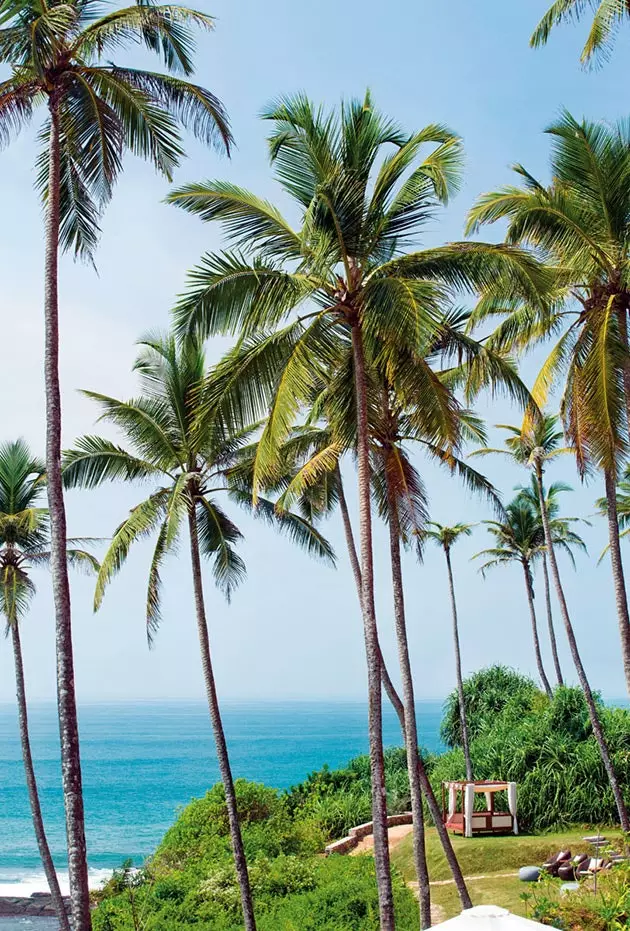
A sofa bed overlooking the Indian Ocean at Weligama Cape
The Gal Oya Lodge has nine thatched-roof rooms spread over more than eight hectares of recovered tropical forest . They are all large, clean and have a partly open-air bathroom, where hot water is obtained through solar energy. The feeling is similar to being in East Africa , and it makes sense, since seeing wildlife is part of the appeal. Also , have been wise enough to hire a highly talented chef whose vegetable soups and curries would guarantee him a place in the kitchen of any trendy London restaurant . Luckily, it's in Gal Oya.
From there we took a helicopter to Bogawantalawa and, from the reservoir, a seaplane to the coast. All very exciting, although it highlighted the difficulties of getting around the island and perhaps explains why it tends to attract a wealthy visitor profile. It's been a long time since that team bus in 1981 that one day took us to Kurunegala, up in the hills. There hundreds of boys came to see how we struggled in the shadow of a huge rock. At the end of a very even match and in suffocating temperatures, we were told that it was a buddhist day without alcohol . However, our hosts managed to get around the ban somehow. If you wanted a beer in the club they brought it to you; if you asked for whiskey, they served you a bottle. Around midnight someone had the idea that we should teach them some Scottish dancing and we ended up dancing in two lines of 20 people, carrying each other . On the shoulders of the coach of the team, I was chased by an impassioned gentleman and had to defend myself with a cricket bat (a Jumbo Stuart Surridge which was ideal for this purpose). Who knows what could have happened without that 'dry law'?
Since then , the names of Sigiriya, Kandy, Nuwara Eliya and Hikkaduwa resonate in my memory as a reminder of innocent fun and friendship. Of course, not everything was perfect. On one of the walls of the hotel pool in Colombo we saw a rat the size of a cat, which the staff chased and exterminated while assuring that it was a larger than normal bandicoot. They then did a dissertation on this creature and its Ceylonese cousin, the hotambuwa, mentioned earlier, whose habit of eating snakes had made him a 'friend of man'.
There is something that has not changed much: the walled fortress in Galle . Although the 2004 tsunami washed away the wonderful cricket ground, its thick walls remained standing and protected the city. After visiting the Dutch and English churches and jewelery shops, there is not much to do in Galle, but that is something that can be applied to the whole of Sri Lanka. I think the reason you travel there is the weather, the people and the feeling of well-being it provides.
There are good waves for surfing On the east and south coasts, there are good walks and there are temples in Kandy and elsewhere, but this is more a place to talk, eat and dream. A good place for the latter is the hotel amangalla , in Galle, decorated in what might be called a neo-colonial style. Although, in my opinion, the ideal place is The Dutch House , at the top of the hill, a little further from the port and the sea but with an atmosphere of exquisite calm. His chef has an incredible talent that he shares with his sister at The Sun House down the road.
Further down the coast, at Weligama, is an example of the choices Sri Lanka has to make **r. On Lake Koggala, the Tri** is being built, a small hotel with vertical gardens on the walls and green roofs.
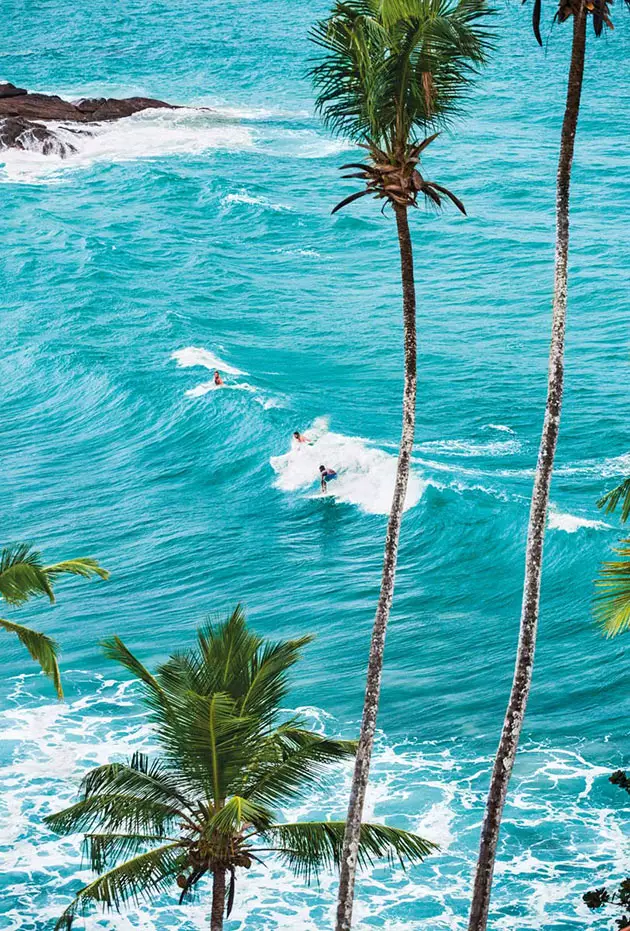
Surfers at Mirissa Beach, South Sri Lanka
Its owners insist that it will be as luxurious as it is eco-friendly, and that you can walk across the lake to a beach club if you've had enough yoga and self-improvement sessions. Looks promising though unfortunately we did not see the big crocodile of the lag or, no matter how much we insisted to the boatman to go into the undergrowth. Right on the coast is the new Cape Weligama , with its huge, self-contained air-conditioned rooms and excellent choice of restaurants, one of which had a very good selection of songs by Cliff Richard playing quietly in the distance.
From here we went whale watching, which turned out to be more like a hunt, as a flotilla of boats whose pilots yelled into their cell phones herded the hapless creatures into dangerous shipping lanes. More enjoyable was an early bicycle ride through the rice paddies and villages around a lake. . There you could feel part of the country and its people, with the added attraction of seeing the kingfishers that perched in a row on telephone wires, as numerous as English ravens.
Another mammoth five-star Marriott is being built on the coast, and its height of 10 stories above the tallest trees annoys some locals. Planning regulations seem open to interpretation, as is often the case in this part of the world. It is a complicated subject. We all like discretion and harmony; but it does not come to mind that a citizen of Europe, with its Costa Brava, Azul and the deteriorated Greek Islands, criticizes a poor country for trying to maximize its tourist income. Y Cape Weligama is a good hotel . If you don't like big rooms with a private pool, palm trees and the Indian Ocean on the other side, that's up to you. And if, like me, you yearn for simpler days and bandicoots, long waits for breakfast and the fiery, delicious, but sometimes dangerous crab curry in the back streets of Colombo after eight hours on the cricket pitch under the suntooth... Well, that's where memory starts to work. To relive the past, of course, but also to enrich the present.
* This report is published in the 90th issue of the December Condé Nast Traveler magazine and is available in its digital version to enjoy on your preferred device.
